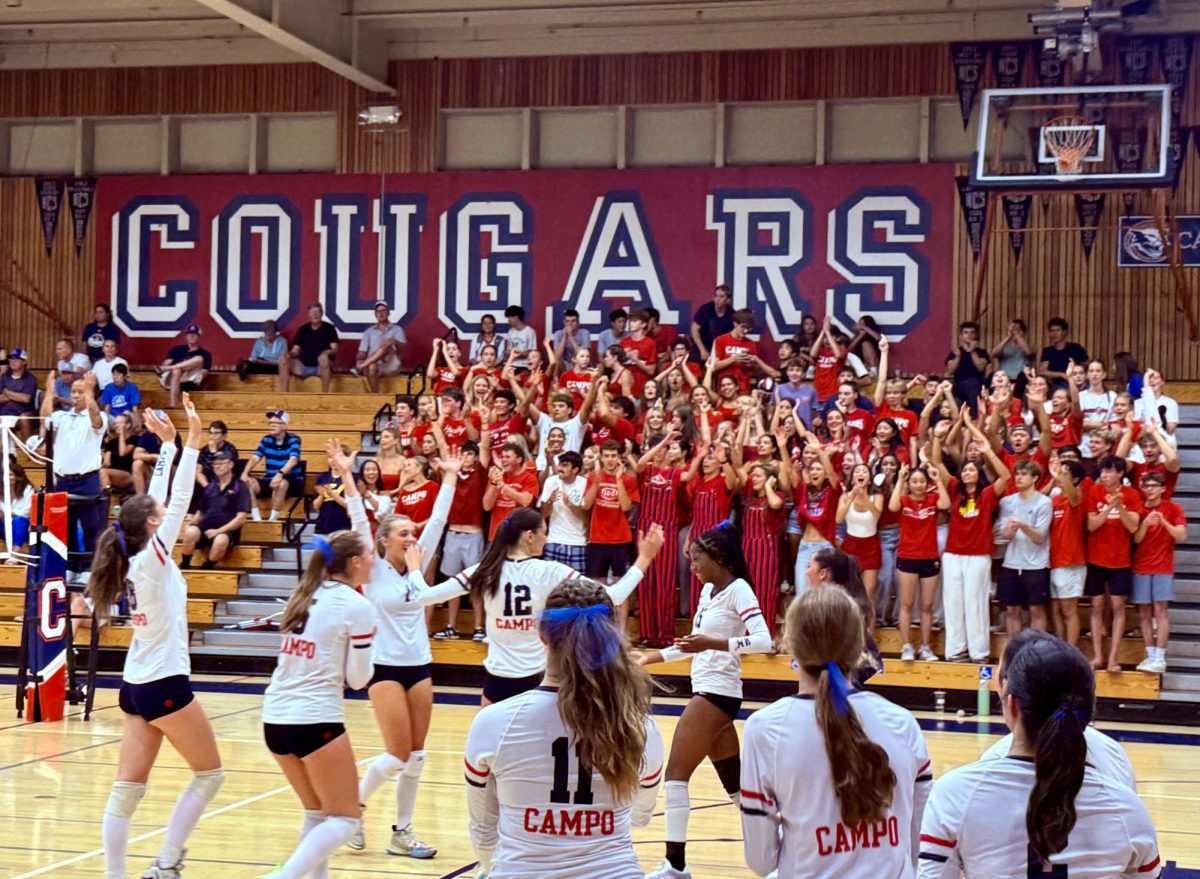Track and field: the only sport comprising 16 different events, each one set up with specialized training to best benefit its athletes. Within those 16 events, it’s easy to distinguish the differences between distance based competition versus the sprints. The Campolindo Track and Field season began on February 5th and from then until May, the sprinters and distance athletes must share the red oval for their training. While the distance athletes are running seemingly endless laps around the track, the sprinters can be found perfecting technique and strength in their shorter blasts down the home stretch. Common stereotypes arise for both sprinters and distance runners, highlighting the contrast between each and sparking friendship…or feud.
Junior Sidd Iyer, a third year distance runner, shared why he chose distance over sprinting, saying “I already did cross country so I figured I would be better at distance since I’ve already been trained for longer distances.” Clearly, Iyer chose distance because of the training, assuming that it would come easier for him but the reason he continued to put up with the endless miles was not simply because he was good at it. Long distances seem to form a special type of bond that can only be made through a grueling long run or hill workout. Iyer said that sprinters likely wouldn’t relate to the “deep conversations shared during long runs,” which builds a “really close community.” Iyers comments how distance fosters a community that the sprinters will never fully understand, one of the reasons you rarely see sprinters spending time with the distance athletes before or after practice. On the contrary, sprinters have a different point of view. Senior Kyle Fossen said he chose sprinting because “it’s more fun. You get to go faster. It’s not as painful. It’s more exciting.”
When discussing each other’s sports, Iyer observed that sprinting sessions appear to be brief, typically involving warm-up followed by a few sprints before concluding. This observation hints at a potential contrast with the longer and more repetitive nature of distance workouts, which are often perceived as tedious. However, it’s important to note that participation in these workouts is voluntary, and athletes like Iyer have the freedom to choose their training regimen. Therefore, any feelings of envy regarding the brevity of sprinting workouts may not be justified, as athletes have the agency to select their preferred training approach.
Fossen expressed his perspective on distance workouts, describing them as “pretty terrible” due to their extended duration, including longer warm-ups, workouts, cooldowns, and races compared to sprinting. He indicated a lack of interest in trying distance running, suggesting that distance athletes subject themselves to increasing levels of pain daily until they either persevere or quit. Fossen pondered whether distance runners might become accustomed to this pain to the point where it negatively affects their lives. His remarks convey not anger or envy but rather a sense of curiosity and questioning regarding the motivations of distance athletes. From his viewpoint as a sprinter, the idea of opting for longer distances seems perplexing when shorter distances offer a place on the team without the same level of suffering. While sprinters may struggle to comprehend the endurance required in distance running, they should recognize that the training demands differ between disciplines, and each athlete chooses their path based on personal preferences and goals.
Surprising Fossen, Iyer further shared that his favorite is the “3200m because it’s what we train for as distance runners.” Sprinters can not seem to fathom the idea of racing 8 laps around the track, especially when their races only last a quarter to half a lap. Iyer said that he thinks the hardest event is “either the 100m or the 300m hurdles”, because the sprinters always look like they’re “struggling at the end.” Following the allegations, Fossen, on the other hand, said his favorite event is the 100m because “it’s over really fast and you’re never tired after so you can actually celebrate.” He thinks that the hardest event is the 400m because “it’s not even fun or rewarding because you’re just so exhausted after.” Distance runners agree with Fossen’s claim about the most difficult race to some extent, but at the same time, hearing the sprinters complain is the last thing they want to hear.
Both athletes, Iyer and Fossen, share the stereotypes prevalent within their respective sports. Iyer shares his opinion about sprinters having “bigger legs” and “always seem to be complaining about anything longer than a 200m race.” On the other hand, Fossen’s had an opposite opinion, saying the distance runners are often “skinny” and “love to hurt themselves for some reason by their workouts that seem to last for hours.” Additionally, Fossen’s mention of the stereotype of sprinters being perceived as “lazy” shows the misconceptions that can exist between each event. These stereotypes influence perceptions and interactions within the running community.
Another sprinter, senior Natalie Falsafi, provided insights into her preference for sprinting, citing the exhilarating sensation it offers and the versatility it provides with events like hurdling. She expressed frustration over the misconception that sprinting is easier, highlighting the demanding nature of both sprinting and hurdling. Falsafi pointed out the unique challenges of the 300m hurdles, emphasizing its blend of endurance and speed.
Sophomore Emily Koehler’s love for distance running is rooted in the unique experience it offers her. She explains how, “it gives me time to get into pace and it’s not as quick.” Unlike the abrupt intensity of sprinting, distance running allows her to immerse herself in the rhythm of her strides, gradually settling into a pace that feels natural and sustainable. This gradual build-up not only provides physical comfort but also a mental space to focus and find her flow on the track.
In the end, when asked whether it’s feud or friendship, it transcends both. It’s a mutual understanding born out of respect. Within the shared space of the track, where every stride echoes dedication and every sprint reflects determination, the lines blur between sprinters and distance runners. They may jest about each other’s training regimens and poke fun at stereotypes, but beneath it all lies a deep appreciation for the commitment and passion each athlete brings to their craft.




